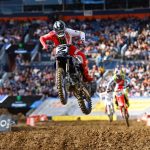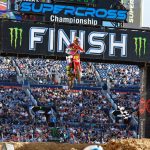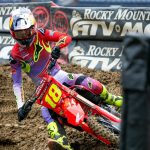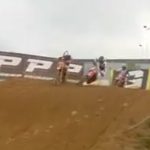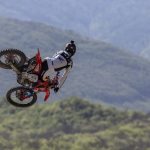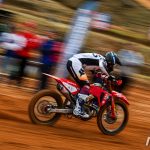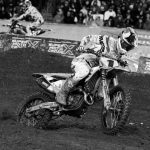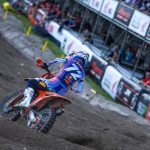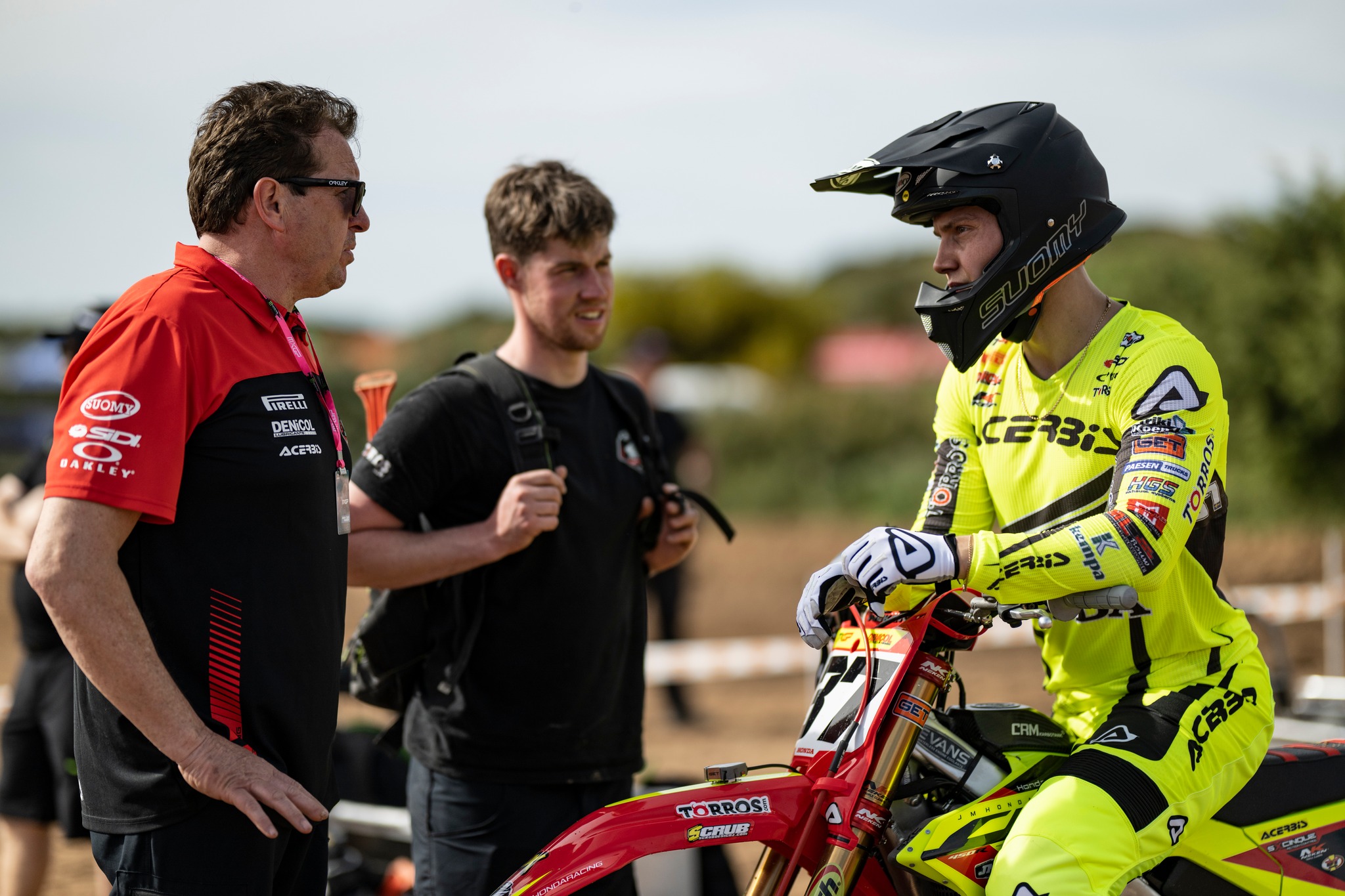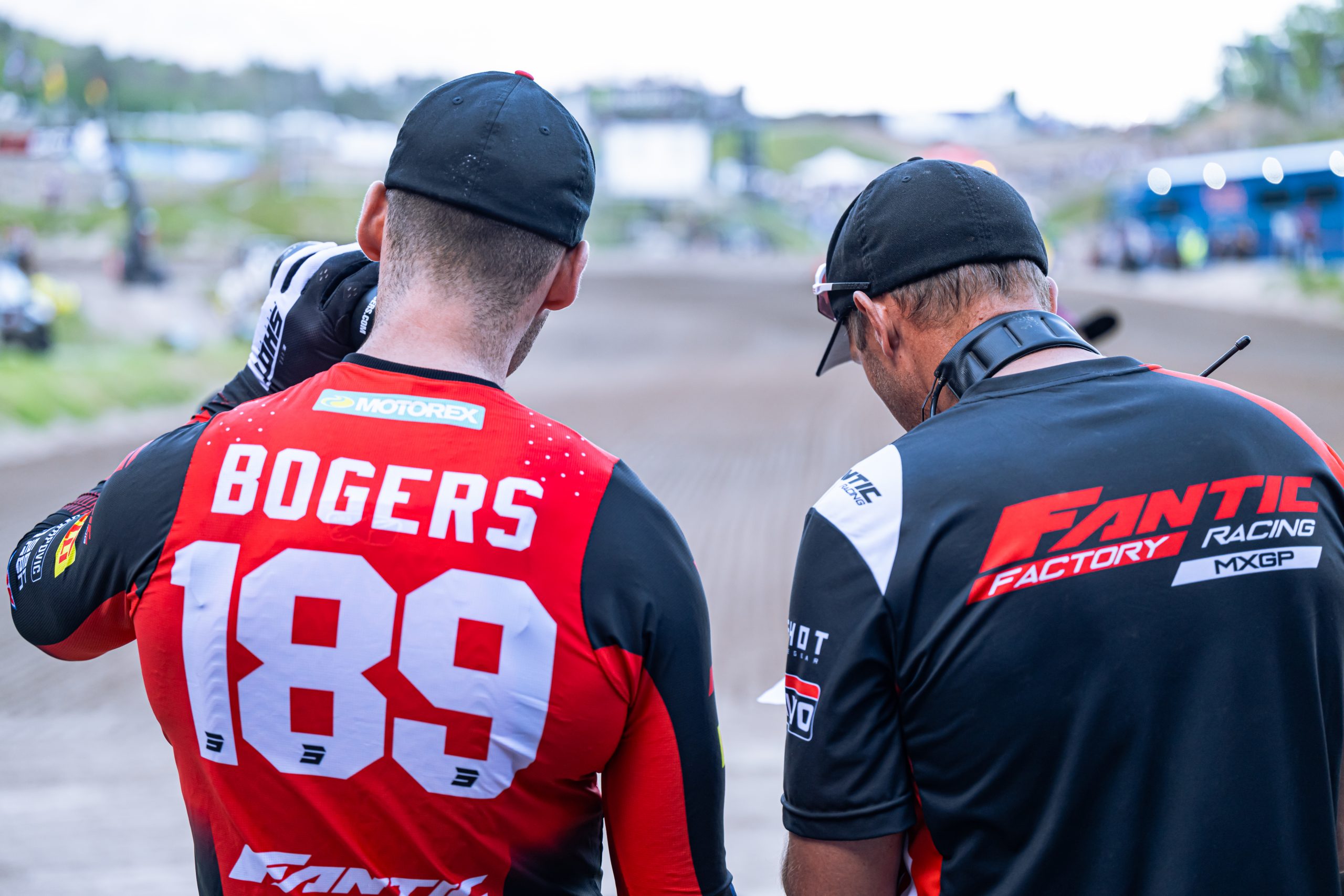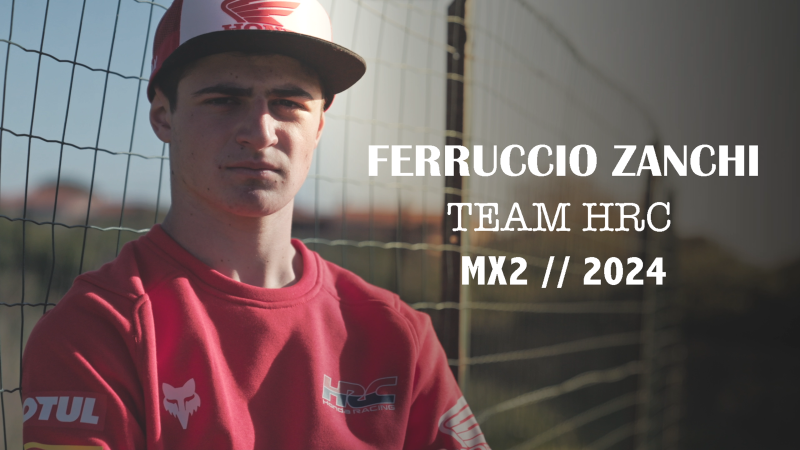We caught up with Jamie Dobb at WSX to discuss his career from teenage prodigy and a long road to the USA and back to being crowned world champ in 2001!
Listen or read below:
Racing a Cagiva at 16 in GPs
The difference in bike from a production bike toa factory bike was just insane back then. The races were 45 minutes plus two laps. My first Grand Prix, I think the races were 54 and 55 minutes because it was a three minute lap!
I was watching Coenen last week and what he was doing, and I honestly believe in this day and age, me and Paul Malin would have been winning Grand Prix at 16 had we have had the set-ups that there is now. I think how professional it is now, I had no clue what to do!
You had to race this duration and it’s like how do you get from this level to that level. You would think you have to go running for 45 minutes, but what’s the intensity? All the information they have now, it would have been nice to be around now! Nobody beat us ever (Jamie and Paul growing up) everybody came.
250 GPs in 1990 at 18
I don’t know why (he moved up so early) I just went that way. I was the youngest ever British champion at 17, which is crazy, I still am the youngest ever British champion! I won the 125 and then 250 at 18 the following year and I won my first GP moto in 1990 on a 250 as well.
1992 season winning a moto
I was still doing in all myself. There was nobody saying this is what you need to do. You were just trying to learn as you went. Somewhat of an amateur rider trying to ride professional. It wasn’t until probably got back from America, two years after that, 2000, when I found the right pieces, mechanic, trainer. I had gone to factory KTM and found Kirk Gibbons and he was the final piece of the puzzle that really started bringing everything together.
The bike quitting at Killinchy GP 92 while leading and throwing a tantrum!
There was a lot of stuff going into it. I was on a production Kawasaki and then Alec Wright swapped me and Paul a few weeks before in Germany. He took Paul off the factory bike and put him on my production bike and I went on his and neither of liked each others, because we liked completely different bikes! So I had to ride a factory bike in Germany and Foxhill and wanted my bike back, I used to rev them where Paul was low rpm.
Then the following week we went to Killinchy. The first one I got second, the second one I was in about third or fourth and got a front flat and couldn’t ride. I remember saying to my family before the third moto I was going to win this one and I was just gone. I think I had 8-10 second lead and I went off that drop-off and it just locked up on me.
It was just all the frustration, it was just everything, messing around and it was a tiny part (that broke), and they said I was supposed to run something different, after the fact. But, anyway, it wasn’t one of my best moments, it was very frustrating.
USA
I should have gone to America when I was 16. I had supercross tracks my whole life. At 15/16 I would do supercross and be on the same second as the top American but then I had not ridden supercross in so long. I think it was around mid-november (92) I had friends over, Dave Osterman, he was like, why don’t you call Mitch, because I didn’t have a deal. I asked him and he called me back the next day and he said yeah, $500 a race and you can get bonuses.
It was a horrendous deal, but I went over and broke my arm, well, I smashed my nuts at the NEC in Decemeber, had a four hour operation to fix them! Then I went out to America, first day on a supercross track, still went for a triple and snapped my arm (on a 125). I went out there a boy and came back a man.

I got second in the supercross championship in 96, me and Kevin Windham had a chance of winning at the last round. I got offered a few deals like Noleen Yamaha and a couple of others but I had actually met my wife when I came back for a week in August time or something and I thought, I want to go home. And, I always had this thing where I wanted to win a world title. So that’s when I came back.
It was great (the us experience), Jeff (Emig) is still one of my best friends today. A clip popped up and in 95 I was getting thirds and fourths every race on the 250 outdoors and I was leading one until the last straight and Larry Brooks thought I was racing him and not lapping him, he just took me straight out and Doug Henry passed me 100m before the finish! I was pissed! He had already held me up for a lap, so it was one of them things.
Coming back to GPs
I rode for Rob Hooper, Rob had a great little team but he didn’t really have a budget, all private. I was on £12,500 and I had to pay everything out of that and I had finished second in supercross in America.
Searle came back, he didn’t finish supercross, had a podium at a National and he was on 250,000 when he came back – a little bit different!
Joining factory KTM in 2000
It was the first time I had a factory ride. I had a factory ride in America for supercross and got second. Then I had the KTM and got second, first, fourth. The fourth should have been, I was a bit cheated out of that one, but it is what it is. Factory teams have big budget, there is a big difference.
On battling Langston.. there ain’t nothing cockier that a South African is there?! It was tough. At the end fo the day he deserved to win. We were told and his team were told you weren’t allowed to change the bike. It was supposed to be the same bike but it didn’t feel that way at certain races.
When the season finished we went testing for the following year and Harry Nolte was their engine guy and said have a go on Grant’s bike. I said, “there’s no point, they are the same.” He said: “Maybe they’re not…”I rode this track in the south of France and you went onto the track up and over this little thing, I gassed it and went, “you mother******!”
It was huge, I raced that bike the following year, the bits, the engine work done, that’s what I raced and won the championship on. I’m not saying I’d have beat Grant with that but..
My wife came to me in September and said you aren’t the same rider as when I first met you, I said. “yeah I am,” bravado! So I went and put a video tape and and said, “she’s right!”
That’s when i completely changed my training around and all the kids I’ve helped with Searle, Max a little bit and Conrad, it’s the same system I used to help them. I was a much better racer that I was the year before.

Winning a world title
The day I won it was like someone had popped a balloon. I broke my collarbone in Sweden, raced two weeks later in France, the following Wednesday I break the other collarbone, something happened on the bike and I crashed, but I couldn’t have it plated. I went to Namur thinking can I ride? And ended up winning the race!
The worst result I got all year was the the day I won the championship, I got fourth. As soon as I crossed the line, I was dead. I was 29 years old, I had not had these opportunities, then one collarbone, “you can still do it,” but the next one, “I don’t think I can do this, it’s getting away from me.” It all worked out in the end I suppose.
250 KTM
It was frustrating, because in hindsight I should have stayed down, let them develop that thing and then gone there. But I trusted so much in Kurt, I was like let’s go for it. The bike wasn’t even made until November and we were racing on it (the next season).
A friend of mine, Craig, brought a stock bike to a practice day and told me to ride it. I said, “what’s the point of riding this compared to my factory bike?” I did one lap on it and I was two seconds a lap quicker and I didn’t think I was moving! It was just little things (on the factory bike), it was lighter than a 125, the vibrations were insane, that’s what ruined my fingers. Both me and Gordon (Crockard) went to the really small bars, rubber mounted grips, the biggest, fattest, grips we could have to stop the vibration.
They have completely changed now, KTM, they do a proper program. We were developing it as we were going on but it probably needed a few years. Normally bikes have a four year development process now, but ours had a four week one before we were racing. It was something they’ve learnt. I should have waited another year to see how it had gone or maybe went on the four stroke.
Ending the career
It was the German GP, the second moto, the ligth switch just went off, so I was quite lucky. There was people having big crashes around me and normalyl you are like, “I just passed a few more people,” but I’m like, “I don’t want to be here.” The risk and reward just didn’t add up.
I was on a privateer bike coming from a factory team, I rode for RWJ Honda. I went testing in October, it was a brand new bike the 250 four stroke, and I said it’s alright that’s a good start and they said, “that’s it.” At KTM you had six different engines to try and as much as me and Gordon were different, it slowed it up a little bit, but it didn’t stop them developing for Gordon and them developing for me, it was what you wanted. Gordon, I think, had a completely different frame to me, because I liked it shorter, I liked it turning tight.
So, there was many things like that and it didn’t stop. Realistically, if I had known, I should have went on the 450 and just worked on suspension and stuff like that. It was a struggle.
Interview: Jonathan McCready




